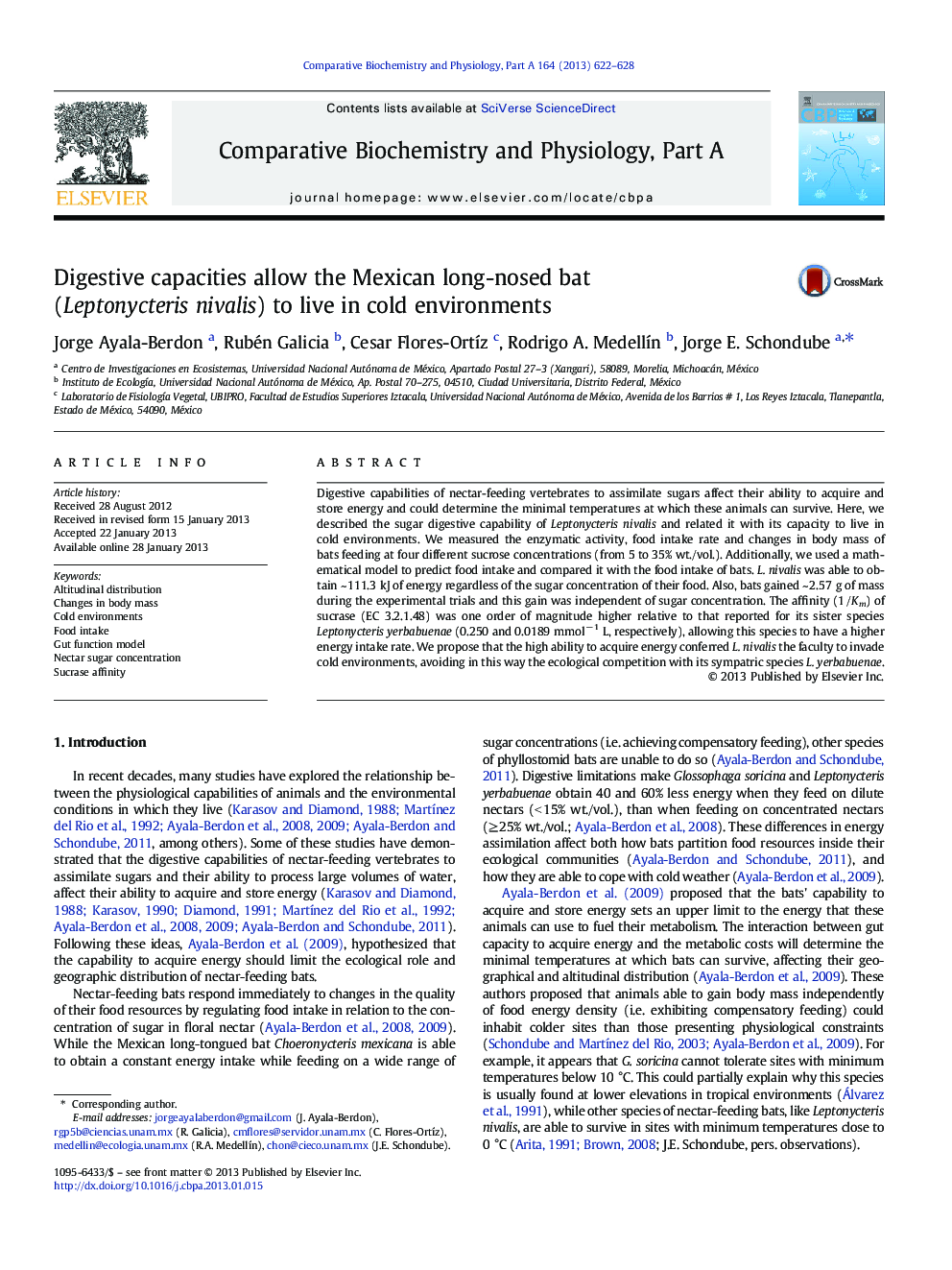| Article ID | Journal | Published Year | Pages | File Type |
|---|---|---|---|---|
| 1972599 | Comparative Biochemistry and Physiology Part A: Molecular & Integrative Physiology | 2013 | 7 Pages |
Digestive capabilities of nectar-feeding vertebrates to assimilate sugars affect their ability to acquire and store energy and could determine the minimal temperatures at which these animals can survive. Here, we described the sugar digestive capability of Leptonycteris nivalis and related it with its capacity to live in cold environments. We measured the enzymatic activity, food intake rate and changes in body mass of bats feeding at four different sucrose concentrations (from 5 to 35% wt./vol.). Additionally, we used a mathematical model to predict food intake and compared it with the food intake of bats. L. nivalis was able to obtain ~ 111.3 kJ of energy regardless of the sugar concentration of their food. Also, bats gained ~ 2.57 g of mass during the experimental trials and this gain was independent of sugar concentration. The affinity (1 / Km) of sucrase (EC 3.2.1.48) was one order of magnitude higher relative to that reported for its sister species Leptonycteris yerbabuenae (0.250 and 0.0189 mmol− 1 L, respectively), allowing this species to have a higher energy intake rate. We propose that the high ability to acquire energy conferred L. nivalis the faculty to invade cold environments, avoiding in this way the ecological competition with its sympatric species L. yerbabuenae.
